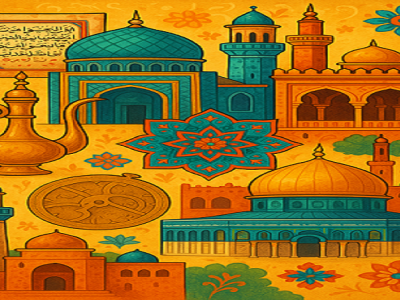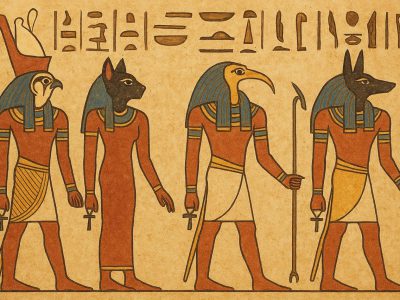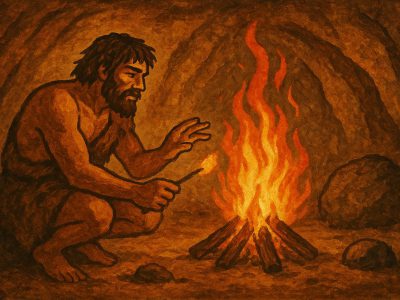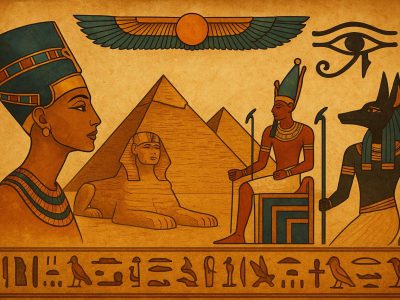The course would aim to educate participants on the prehistoric cultures, technologies, and environments of the Arabian Peninsula during the Stone Age (Paleolithic, Neolithic). It would focus on developing skills in archaeological methods, understanding ancient human adaptations to the region’s unique environments, and exploring the material culture, such as stone tools, rock art, and early settlements. The course might also seek to connect these findings to broader narratives of human migration, survival strategies, and cultural development in the Middle East, fostering an appreciation for the region’s deep historical roots.
By the end of this course, the trainee will be able to:
- Identify Regional Stone Tool Types: Recognize stone tools specific to Arabian prehistory (e.g., Acheulean handaxes, Levallois flakes, Neolithic arrowheads) based on morphology and regional variations.
- Apply Dating Techniques: Use relative dating (e.g., stratigraphy) and absolute dating methods (e.g., optically stimulated luminescence, radiocarbon dating) to determine the age of stone tools from Arabian archaeological sites.
- Classify Tools Using Regional Typologies: Categorize stone tools according to typological frameworks relevant to the Arabian Peninsula, such as those used for Paleolithic, Mesolithic, or Neolithic assemblages.
- Analyze Manufacturing Techniques: Understand and differentiate lithic technologies like bifacial flaking, pressure flaking, or grinding, specific to Arabian contexts.
- Interpret Tool Function and Use: Assess tool functions (e.g., hunting, butchering, plant processing) through use-wear analysis, residue studies, or experimental replication, considering Arabian environmental contexts.
- Contextualize Archaeological Sites: Relate stone tools to key Arabian sites (e.g., Jubbah or Shuwaymis) and interpret their cultural, environmental, and technological significance in the Stone Age.
- Document Artifacts: Accurately measure, sketch, photograph, and catalog stone tools, adhering to standards for Arabian archaeological documentation.
- Evaluate Environmental Adaptations: Understand how Stone Age populations in Arabia adapted tool-making to local resources (e.g., chert, flint) and environmental changes like desertification.
- Conduct Comparative Analysis: Compare Arabian stone tool assemblages with those from neighboring regions (e.g., Levant, East Africa) to understand cultural connections or migrations.
- Present Research Findings: Formulate research questions, analyze data, and communicate findings about Arabian Stone Age tools in written or oral formats, suitable for academic or public audiences.
Course Features
- Lectures 11
- Quiz 0
- Duration 1680:00:00
- Course Duration 03:55:00
- Skill level All levels
- Language Arabic
- Students 0
- Assessments Yes
Curriculumm
- 7 Sections
- 11 Lessons
- 10 Weeks
- Module 1: Divisions of Stone Ages in the Arabian Peninsula.1
- Module 2: The Lower Paleolithic3
- Module 3: The End of the Lower Paleolithic and the Transition to the Middle Paleolithic in Arabia.1
- Module 4: Middle Paleolithic Sites2
- Module 5: Later Stone age (Epi-Paleolithic) Sites2
- Module 6: Neolithic Sites2
- References- دعاء سيد إبراهيم، العصر الحجرى القديم: العصر الحجرى القديم الأسفل فى وادى النيل وبلاد الشام وشبه الجزيرة العربية، الجزء الأول، دار السعيد، القاهرة، 2020. - دعاء سيد إبراهيم، العصر الحجرى القديم: العصر الحجرى القديم الأوسط فى مصر وبلاد الشام وشبه الجزيرة العربية، الجزء الثانى، دار السعيد، القاهرة، 2022. - دعاء سيد إبراهيم، " الأشولية في مصر"، المجلة السنوية لكلية البنات للآداب والعلوم والتربية. جامعة عين شمس، المجلد ١٩، ٢٠١٨. - دعاء سيد إبراهيم، "الأشولية في الجزيرة العربية"، المجلة السنوية، كلية البنات للآداب والعلوم والتربية، جامعة عين شمس، المجلد ١٩، ٢٠١٨. - دعاء سيد إبراهيم، " الخروج من أفريقيا ١"، وقائع المؤتمر الدولي الثاني لعصور ما قبل التاريخ في العالم العربي، مكتبة الإسكندرية، ٢٠١٥. - دعاء سيد إبراهيم، " الصناعات الحجرية في العصر الحجري القديم الأوسط في مصر والجزيرة العربية"، وقائع المؤتمر الدولي الأول لعصور ما قبل التاريخ في العالم العربي، القاهرة، ٢٠١٢. ـــــــــــــــــــــــــــــــــــــــــــــ - إبراهيم أحمد رزقانة، الآلات الحجرية، صناعاتها وأشكالها، مكتبة الآداب ومطبعتها، القاهرة، 1952. - إبراهيم أحمد رزقانة، موضوعات من الجغرافيا التاريخية، مكتبة الآداب ومطبعتها، القاهرة، 1966. - أحمد يوسف دياب, آسيا الغربية فى العصر الحجرى القديم ( دراسة متخصصة فى الأدوات الحجرية) , رسالة دكتوراه بكلية الآثار جامعة القاهرة , 2005. - حسن الشريف، عصور ما قبل التاريخ، الجزء الأول، العصر الحجرى القديم-مصر- غربى آسيا- شمال إفريقيا، البحيرة، 1994، ص 2-3. - -رينيس بياتريكس ميدان, عصور ما قبل التاريخ فى مصر , ترجمة ماهر جويجاتى, القاهرة,2001,ص33 - 40. - -سلطان محيسن، بلاد الشام فى عصور ماقبل التاريخ (الصيادون الأوائل)، الأبجدية للنشر، دمشق، 1989. - -فاروق شويقة، مقدمة فى الأنثروبولوجيا الطبيعية والسلالات البشرية, دار روتاربرينت, القاهرة , 1986. - سر جون إيفانز ، الأدوات الحجرية القديمة والأسلحة والحلي لبريطانيا العظمى، لونجزمان، لندن، 1897. - رياض، زينب عبد التواب، مصر وصناعة الأدوات الحجرية خلال عصور ما قبل التاريخ، مجلة الآثار، 2016.0
Target audiences
- This course would appeal to those with a mix of academic, professional, or personal interest in archaeology, human history, or material culture, particularly those who value hands-on or technical skills in analyzing artifacts such as:
- Archaeology students: Undergraduate or graduate students studying archaeology or anthropology, seeking to specialize in lithic analysis or prehistoric technologies.
- Professional archaeologists: Researchers or field archaeologists looking to enhance their skills in identifying, classifying, and dating stone tools for excavation or research purposes.
- Historians and anthropologists: Scholars interested in human evolution, early technologies, or cultural development who need a technical understanding of stone tool analysis.
- Museum curators and cultural heritage professionals: Individuals involved in curating or preserving archaeological artifacts, requiring knowledge of stone tool classification for cataloging or exhibition.
- Avocational archaeologists and enthusiasts: Hobbyists or members of archaeological societies with a keen interest in prehistory and material culture.
- Geologists or material scientists: Professionals studying the geological sources of stone tools or their material properties, focusing on dating techniques like radiocarbon or obsidian hydration.
- Educators: Teachers or professors in history, anthropology, or related fields who want to incorporate stone tool studies into their curricula.





